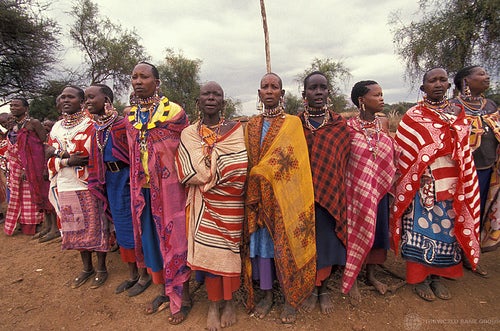Imagine things are looking up for you. You are running your own business transporting and selling charcoal to retailers in the area, your husband has a steady job, and together you own real estate which you rent out. Then, your husband dies – your in-laws and your husband’s kinsmen take all of the assets and are entitled to do so under law. You are left with nothing to rebuild your life and provide for your child. This is what happened to Anna in Kenya. Her story is not uncommon. Women’s rights groups in Kenya have been pushing for change and finally, with the institution of a new Constitution in August of 2010, their rights will be protected. This Constitution, the main purpose of which was to limit the powers of the executive, has risen from the ashes of ethnic violence following elections in 2007 in which over 1,100 people are believed to have been killed.
In terms of broad legal principles relating to women’s rights, Kenya’s new Constitution has  two reforms. The first, is that customary law, still recognized in Kenya alongside codified law and common law, is no longer exempt from constitutional provisions prohibiting discrimination based on gender. As a result, discriminatory inheritance practices such as those that disinherited Anna will come under increased legal scrutiny. The second, is that in addition to gender being a prohibited ground for discrimination, protections were strengthened with a clause mandating equality based on gender, and a clause providing that parties to a marriage are entitled to equal rights at the time of marriage, during marriage and at the dissolution of marriage. In addition, Kenya has instituted specific provisions, so that Kenyan women can now pass citizenship to their spouses and children on equal footing with Kenyan men. The latter, a huge achievement as it empowers the other half of the population with the same right, is something many countries still continue to prohibit wives and mothers to do.
two reforms. The first, is that customary law, still recognized in Kenya alongside codified law and common law, is no longer exempt from constitutional provisions prohibiting discrimination based on gender. As a result, discriminatory inheritance practices such as those that disinherited Anna will come under increased legal scrutiny. The second, is that in addition to gender being a prohibited ground for discrimination, protections were strengthened with a clause mandating equality based on gender, and a clause providing that parties to a marriage are entitled to equal rights at the time of marriage, during marriage and at the dissolution of marriage. In addition, Kenya has instituted specific provisions, so that Kenyan women can now pass citizenship to their spouses and children on equal footing with Kenyan men. The latter, a huge achievement as it empowers the other half of the population with the same right, is something many countries still continue to prohibit wives and mothers to do.
Women around the world face daily struggles and a slew of questions around their status as participants in the economy: Do I have the necessary documentation? Can I stay in the country or must I move abroad because my husband is not entitled to citizenship and cannot work? Are my children citizens and therefore eligible for various public benefits or must I ensure I have enough current income to help cover their costs? Do I have sufficient property rights over collateral for a lender to take me seriously? What if I face discrimination or harassment at work? Countless women in developed and developing countries can be constrained in their choices because of a lack of, or insufficient legal protection. This is why the Women Business and the Law report tracks legal changes globally over time – to highlight reformers such as Kenya’s and to correlate legal changes with outcome variables for women’s labor force participation, management, and entrepreneurship, such as those measured by the Enterprise Surveys.
New procedures for small claims suits, essential for serving small businesses where women’s ownership is concentrated, have been instituted in Kenya this past year. This should help to boost women’s entrepreneurship and in the future, the impact of this reform can be tracked with outcome variables such as the number of female owned small and medium enterprises like Anna’s charcoal business.
Kenya is no anomaly in that historically, times of political change have brought with them the opportunity to pass laws promoting women’s rights. For example, in the United Kingdom, after landless men were enfranchised in the mid 1800s, a number of acts promoting women’s rights were passed in parliament, giving them rights to separate property and legal independence.
That said, opponents of reform have often cited the influence of foreign concepts and/or the subversion of family values and society. Such arguments are not new. For example, in 1921 Japanese legislators cited the subversion of the family system that was the basis of the Japanese social system as a reason not to give women the right to vote A woman’s place, they felt, was in the home. But, with perseverance and shifting international and domestic contexts post WWII, Japanese women gained the right to vote in 1946.
Embedding gender reforms so deeply in the constitution can be risky if people throw out the baby with the bathwater – that is, refuse to pass the constitution as a whole because of opposition to one or two articles. However, the impetus for political change in Kenya seems to have outweighed the opposition to gender based reforms. Women have enhanced equality as a result, a first step in ensuring that discrimination such as that faced by Anna when she was disinherited will cease.


Join the Conversation